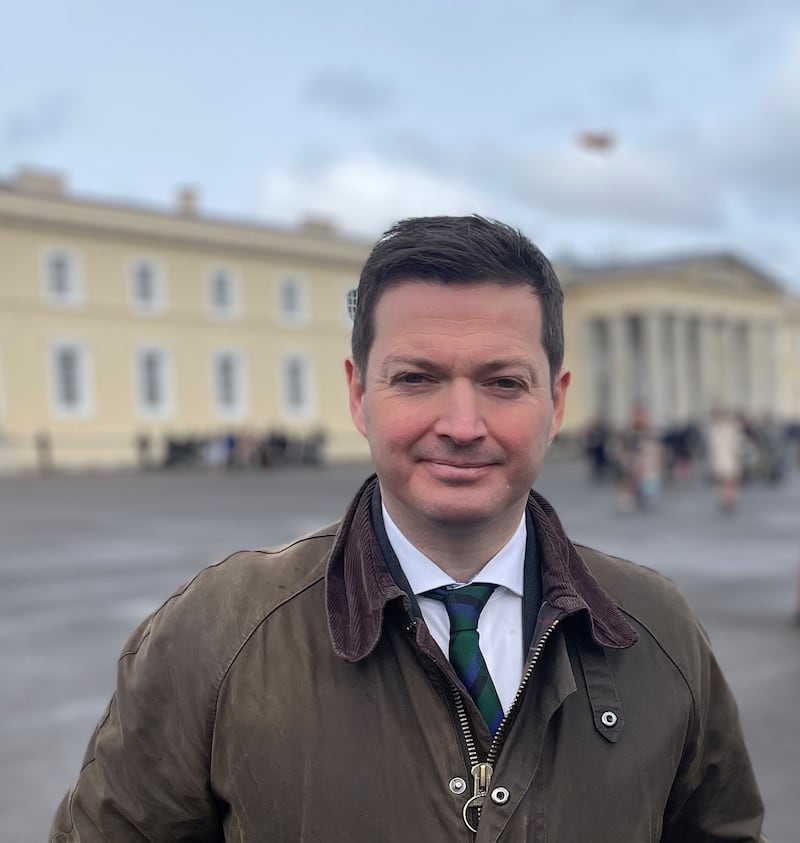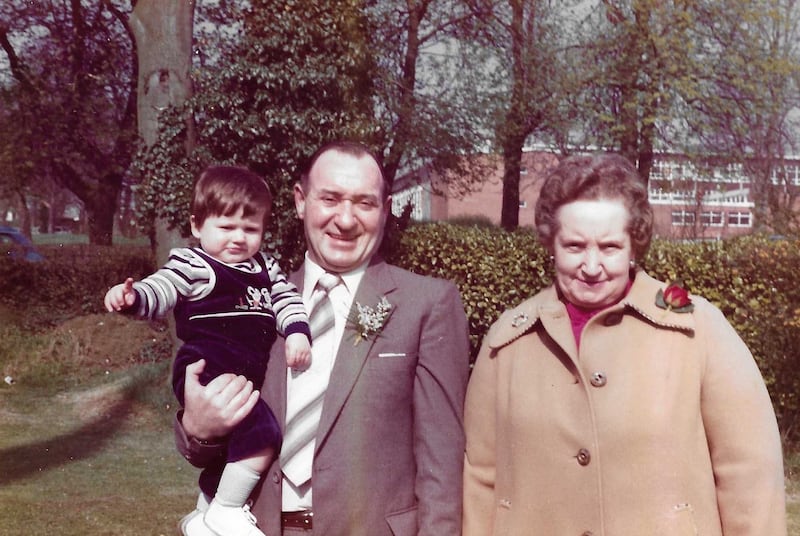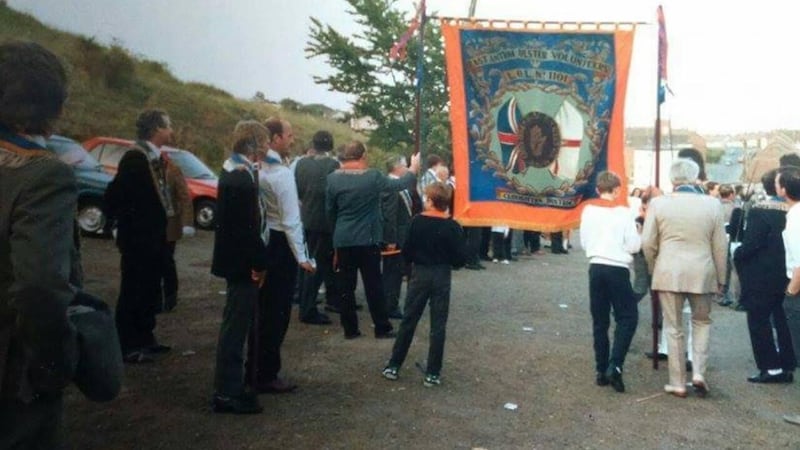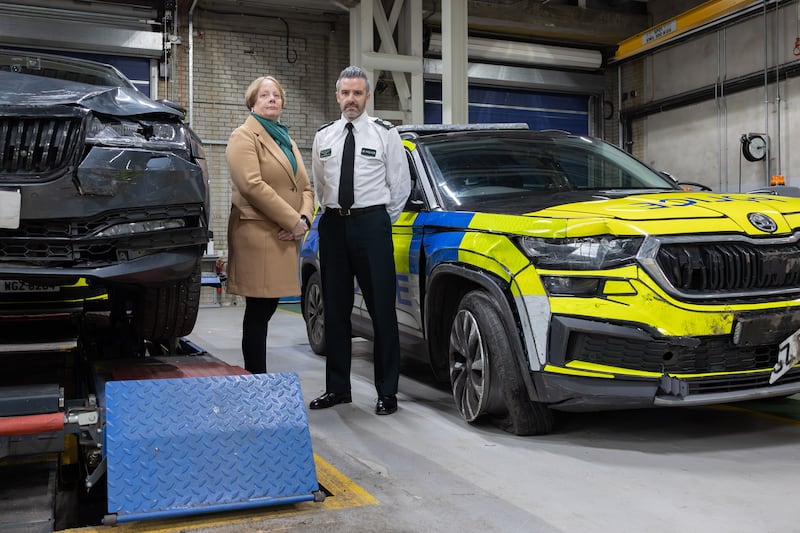The bricks and bottles rained down thick and fast. I ducked to avoid a golf ball hurtling in my direction. I wove to narrowly miss a bottle smashing on the ground beside me. Up ahead was a solid line of police Land Rovers blocking the bridge. Royal Ulster Constabulary (RUC) officers in full riot gear huddled closely together in front of their vehicles in a well-disciplined formation, holding their reinforced shields tightly to their chests.
Facing off against the police officers that July in 2001 were about 30 Orangemen, who had also formed up in orderly ranks, their standard-bearer spearheading their advance towards police lines. The young man carrying the bright blue, gold and red bannerette depicting the local lodge’s emblem – a crest emblazoned with the words “For God and Ulster” – was a friend of mine. We grew up in the same housing estate and occasionally socialised together.
As I stood observing the lodge at close quarters, I felt like I was among friends. Among people like me. The lodge regalia was completed with a huge banner depicting a painting of soldiers from the 36th Ulster Division going over the top in the trench warfare of the first World War. The soldiers on the banner were portrayed as stoic, defiant and determined. It flapped in the warm July breeze, a reminder of the slaughter of the Somme, held aloft by two Orangemen as bricks and other debris flew above our heads, thrown by angry nationalists behind police lines.
Adrenaline coursed through my veins. A red mist descended over those around me. Fear, anger and frustration animated them.
Outstanding George Best, a footballer for all seasons in any era
The Irish Unity Dividend by Ben Collins: Little to entice unionists to join the conversation
More than 2,500 assaults on police officers in Northern Ireland in 12-month period
UK Covid inquiry: Earlier lockdown may have saved 23,000 lives
I began to question why I was even here.

The truth was, I liked to accompany this lodge every Twelfth of July. It was my grandfather’s lodge. Like my grandmother, he had been born and reared a few hundred yards along the Whitewell Road in a tough, working-class row of terraced homes on Barbour Street.
[ Why do Orangemen march? The Twelfth of July explainedOpens in new window ]
They were hard times, when the shadow of the Great Depression touched their lives and the lives of their Catholic neighbours in what was known locally as “Pope’s Row”.
Wreak havoc
Relations between the two communities were generally good except for times, such as in the mid-1930s, when loyalist and republican gunmen re-emerged to wreak havoc.
After my grandparents married, they moved to Mill Road, a few hundred yards from where I now stood on Arthur’s Bridge, before finally settling in East Way, Rathcoole, in the mid-1960s.
My grandfather and his Orange brethren were confronted by the harsh reality of social and political upheaval. Their traditional route was now blocked by those who did not want them to pass
As the Troubles picked up pace in the 1970s, fear and intimidation drove between 8,000 and 15,000 families out of their homes, leaving places such as Greencastle, Bawnmore, Longlands and the Whitewell Road which were predominantly Catholic and nationalist, while Protestant families moved in large numbers to the neighbouring White City and Rathcoole estates.
Against this backdrop of changing demographics, my grandfather and his Orange brethren were confronted by the harsh reality of social and political upheaval. Their traditional route was now blocked by those who did not want them to pass.
It was a tense situation, only defused when two members of the Progressive Unionist Party (PUP) appeared on the scene to exert a calming influence.
Angry though my grandfather and the other Orangemen were, they respected the PUP’s call for restraint. They agreed to disperse, with the hope that one day they might complete their march.
They never did.
In her celebrated travelogue on Northern Ireland, A Place Apart (1978), Dervla Murphy found herself among Orangemen like these. Murphy referred to them as belonging to a “close-the-ranks tradition, always suspecting threats, plots, betrayals, conspiracies and the lookout for danger”. It was not difficult to see what had brought them to this point. Fear stalked the streets and death lurked around every corner.
Uneasy peace
Just over two decades later, the afterglow of the Belfast Agreement (1998) had done little to neutralise sectarian confrontations in some areas and they continued to escalate, with occasional murders punctuating an uneasy peace.

In my new book, A People Under Siege, I write about how sectarianism in this part of north Belfast, like other parts of the North, pre-dated partition. The historical reality was that Protestants and Catholics had been drawn into conflict during the marching season ever since a local lodge was consecrated in Greencastle in 1868.
The Belfast Agreement gave those who wished to resolve their political differences peacefully an opportunity to make the world a better place for their children and grandchildren
Against the backdrop of such ancient enmity, it was, therefore, not difficult to appreciate how this fear and insecurity can provoke a closing of ranks.
In another sense, it would be wrong to see violent confrontation as the only way of understanding this divided society.
Although my recollections of the angry confrontation during the marching season in 2001 emphasise conflict, behind the scenes it was a different matter.
Some of the older members of the lodge, including my grandfather, agreed wholeheartedly with the PUP’s analysis that de-escalation, not escalation, was the key to resolving tensions in the area.
The Belfast Agreement gave those who wished to resolve their political differences peacefully an opportunity to make the world a better place for their children and grandchildren. It was this compulsion that meant they could be confident in exerting a calming influence even amid the angry shouts across the barricades.
To appreciate this kind of restraint, though, we need to look beyond stereotypes.
Fond memories
My grandfather, Jackie Graham, was more than an Orangeman. He was better known, perhaps, as a former footballer who had played for Portadown and other Irish League teams in the 1940s and 1950s. He had even gone on to coach several football teams until the 1980s.
For much of his working life, my grandfather worked in textile mills and later as a machine operator in multinational firms Carreras and ICI in east Antrim. As a trade unionist who spent much of his time in the company of other trade unionists, he believed in “thinking Christianity” and a progressive form of unionist politics that was open to everyone.
Among those with whom he spent time was his close friend Bobby Gourley, who had been the chairman of the Northern Ireland Committee of the Irish Congress of Trade Unions (ICTU), and RJ “Bob” Kidd, the local councillor for Rathcoole. Bob had been a member of the Northern Ireland Labour Party during its halcyon days in the 1960s, becoming an independent after the party died an electoral death in the 1970s.

I have fond memories of early morning dog walks with my grandfather where we would encounter Bob near Macdeon Point and the two of them would indulge in progressive political conversations.
My grandfather and grandmother loyally cast their votes for Bob, along with another ardent socialist, Mark Langhammer, who was elected to represent the same area in the 1990s.
It was my grandfather who taught me the value of the mantra “it’s nice to be nice” and to strive always to understand other people’s perspectives, even if I might disagree with them.
Given his politics, he frequently disagreed with Ian Paisley and the DUP, who he believed were responsible for winding up young people to the extent that they ended up in prison. Apart from my one abiding memory of him remonstrating with a seller of Paisley’s Protestant Telegraph outside his housing executive home, it was my grandfather’s analysis of the DUP as a political cult that has stayed with me all these years.
Interestingly, I found this analysis shared by my grandfather’s other close friend, Geordie Heslop, a second World War veteran. One of my favourite stories both men used to tell was of Geordie’s serial heckling at Paisley’s rallies. At one rally in the 1970s, he heckled Paisley for dispatching young men to “prison camps”, a charge that was greeted by the rancour of older women beating him with their umbrellas and accusing him of being a “Lundy”.
‘Lundys’
In Paisley’s decades-long leadership of the DUP, those who broke ranks and stood against the herd were deemed “Lundys”. (In 1688, Robert Lundy was military governor of Derry accused of trying to betray the city’s inhabitants to the advancing armies of the Catholic King James.)
As I detail in my book, unionism is generally divided between those who are more progressive in their politics and those who are not.
The party’s support for Brexit was predicated on Paisley’s religious-based millenarianism regarding the broadening of EU membership, which he infamously labelled a ‘new tower of Babel’ in his valedictory address to the European Parliament
For over half a century the DUP has fallen into the latter category, something that has accelerated since the party eclipsed the Ulster Unionist Party in elections 20 years ago.
The DUP has made a virtue over-escalating their rhetoric to keep its followers in a constant state of anxiety.
The party’s support for Brexit was predicated on Paisley’s religious-based millenarianism regarding the broadening of EU membership, which he infamously labelled a “new tower of Babel” in his valedictory address to the European Parliament.
[ Ian Paisley: Charismatic, chameleon or charlatan?Opens in new window ]
In this sense, the DUP’s opposition to the Northern Ireland protocol and Windsor Framework Agreement is not so much about a technocratic fix to the messy issue of an open Border on the island of Ireland as it is about the party’s inability to do anything other than close ranks.
It is little surprise that we hear murmurs within the DUP about a break with the Conservative Party and a strategic orientation towards Keir Starmer’s Labour Party, which many commentators predict will win the next UK general election. The party is predisposed to save its political skin even if that means becoming a political chameleon.
And what of those unionists who continue to rally around the DUP’s political millenarianism? They may well feel a sense of security in saying no to a return to devolved government. After all, closing ranks, as I discovered all those years ago, gives you a sense of belonging even if you have nothing else to show for it.
For those unionists more receptive to more calming influence of other forms of political unionism, they will continue to stand against the herd until such time as a political project with their material interests at heart emerges.
Aaron Edwards is the author of A People Under Siege: The Unionists of Northern Ireland, From Partition to Brexit and Beyond, published by Merrion Press.














